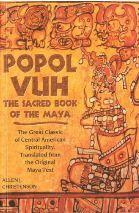 |
| One of the books we read in class |
Since I am majoring in Humanities, I am interested in any humanities so enroll in all that I can. I love culture, and any humanities class focuses on culture and religion. I learned many things in this class, including the Olmec and Maya civilizations, the experience of immigrant farmworkers, how colonialism affected Mexico, and how border policies are separating families. Before this class, I knew little about these subjects to the point where I wouldn't be confident in a discussion about these topics. However, now I can say that I am very confident in sharing my learning with others.
In our final project for this class, I focused on the theme of religion. From the Olmec civilization all the way to the contemporary issues of what the people of Latin America face, my presentation tells the story of how religion plays a role in the lives of many. What I liked best about the project was being able to see the impact that religion has at the end of it. Each slide tells its own story of how religion influences art, ideas, skills, and institutions. In all, spent around fifteen hours plus on this project, as I went solo. Here is my presentation which focuses on religion.
Works Cited:
Christenson, Allen J. Popol Vuh. O Books, 2003.
Holmes, Seth M. Fresh Fruit, Broken Bodies Migrant Farmworkers in the United States. Univ. of California Press, 2014.
Books I Have Read in 2022
Aciman, Andre. Call Me by Your Name. Atlantic Books, 2007.
- This is about a teenager, Elio, who falls in love with his father's intern, Oliver. It is a story about longing, peaches, and healing from heartbreak. I recommend this book if one loves Italy in the 80s.
Christenson, Allen J. Popol Vuh. O Books, 2003.
- This book holds the stories of the ancient Maya which have been translated from the original Maya text. It focuses on many stories including twin brothers, maize, and a rubber ball. It shows us what the Maya civilization believed thousands of years ago.
Colum, Padraic. The Children of Odin: Nordic Gods and Heroes. Barnes & Noble, 2006.
- This book is a collection of ancient Nordic myths. It is a lyrical retelling of the epic tales of Nordic gods and Nordic heroes. If you like Thor and Loki from the Marvel movies, then you can read the mythology that inspired these Marvel characters.
Holmes, Seth M. Fresh Fruit, Broken Bodies Migrant Farmworkers in the United States. Univ. of California Press, 2014.
- Holmes provides us with information about the everyday lives and suffering of migrant farmworkers. This book includes the horrors of border control and the illegal acts that border control agents commit on people trying to cross the border. I highly recommend this book as it opens your eyes to the reality of the embedded racism our policies contain.
Rubenstein, James M. Contemporary Human Geography. Pearson Education, Inc., 2019.
- One of the branches of geography is human geography. This book is associated and deals with humans and their relationship with communities, cultures, economies, and interactions with the environment by studying their relations with and across locations. It is a great book if you want to learn about our relationship with the landscape around us.




